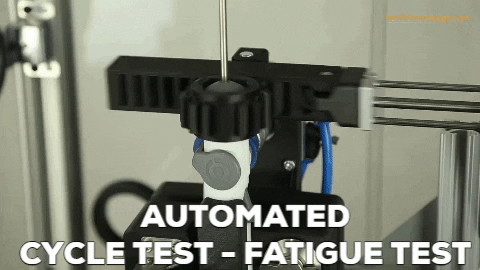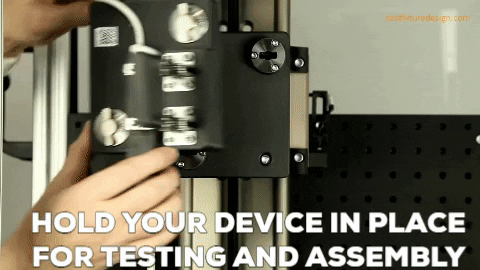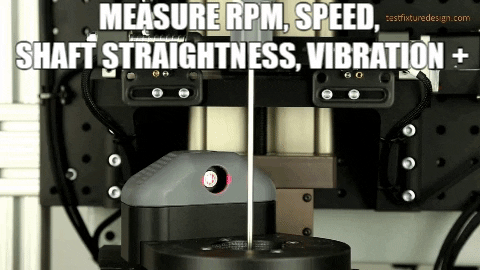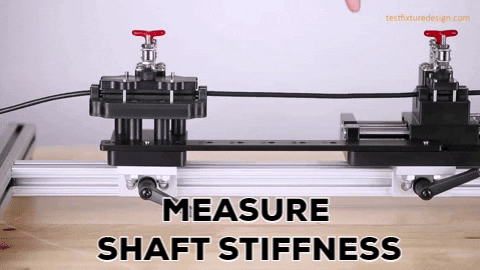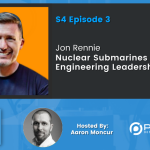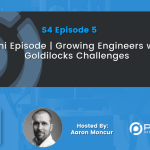Yonatan Cohen | Quantum Computing
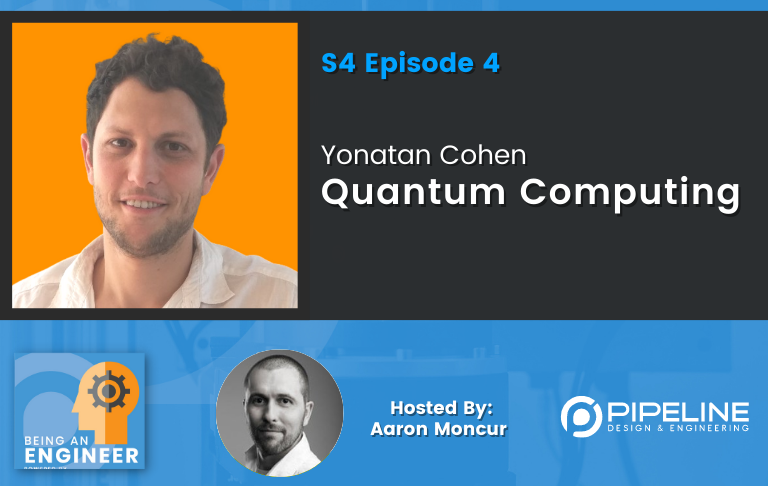
Who is Yonatan Cohen?
Yonatan Cohen holds bachelors, masters, as well as a PhD degrees in physics, and is co-founder and CTO at Quantum Machines where their team of quantum physicists, software and systems engineers, and chip designers are on a mission to advance the world of quantum computing.
EXPAND TO VIEW EPISODE TRANSCRIPTION
SUMMARY KEYWORDS
quantum computer, qubits, quantum, states, classical computers, quantum computing, called, computer, problem, applications, system, build, machines, ions, electron, solve, starting, operation, orbitals, parallel
SPEAKERS
Yonatan Cohen, Aaron Moncur
Aaron Moncur 00:00
We received an email from a lovely young woman named Adriana recently, who shared with us that her boyfriend Jorge is a huge fan of the being an engineer podcast, and asked if it would be possible to send him a short message as a surprise for their upcoming anniversary. So, Jorge, thank you so much for your support. And from all of us here at the podcast. We wish you a wonderfully memorable upcoming anniversary. And hold on to that Adriana, she seems like a keeper. Hello, and welcome to another episode of The being an engineer Podcast. Today we’re speaking with Jana, tin co hen who holds bachelor’s, master’s and PhD degrees in physics. Johnathan is co founder and CTO at Quantum machines where their team of quantum physicists, software and systems engineers, and chip designers are on a mission to advance the world of quantum computing. Yonatan, thank you so much for being with us today.
Yonatan Cohen 01:12
Thank you for having me. I’m very excited to be here.
Aaron Moncur 01:14
All right, well, what made you decide to become a physicist?
Yonatan Cohen 01:20
Well, I kind of always had actually, I kind of always had, when I was like, a young kid, I had kind of like two main interests. One was, like how computers work like, you know, so why do I see those things on my screen? On my computer screen? How do I see images and characters and moving when I press different keys? And the other one was the same, but about the universe? Kind of, you know, why do I say, around me? And how does it all work? And then, when I was in high school, I took classes in both physics and computer engineering. And I felt that I got it in terms of how a computer work, but not how the universe works. So I continue to fit with physics.
Aaron Moncur 02:15
Well, it sounds like you were a deep thinker from an early age.
Yonatan Cohen 02:19
Just curious about stuff. Yeah.
Aaron Moncur 02:23
Well, tell tell us a little bit about quantum computing. I mean, I think we have all heard the term quantum computing at this point. But I think a lot of us really don’t understand what it is. So what what is quantum computing? And? And can you explain a little bit, you know, basics, how does it work at a fundamental level?
Yonatan Cohen 02:44
Sure. So in general, the quantum theory of nature kind of expense, the very basic way in which we how we understand nature to be working. So. And one of the fundamental aspects of it is that things especially when we talk about very small things, like electrons and atoms and things like that, they are not really in, in one state or the other, like, we know from classical physics, right? Like, if I hold the coffee cup in my hand, it’s, it’s only on in my right hand, it’s not in my left hand, right? So, right, it’s definitely not on the table where I lift it up, right. But it turns out that with quant with, you know, when you go to like, what we call quantum systems, but this is just, you know, every system that we see it in, when we isolate tiny particles from their environment, we actually see that they can be in multiple states at the same time, we see that an electron is in two different places at the same time, which is very weird, but it happens. And we have a mathematical framework to describe that and to calculate results of experiments that we do with those electrons or atoms or other other quantum systems. And that’s quantum physics. And then, you know, in the very late 70s, early 80s, physicists started to ask, you know, can we build a computer that’s based on these fundamental expansions of of nature, because a classical computer regular computer is based on the fact that systems can be in one the system like even the full computer, it can be in one state at every point in time, right? All the different bits in my memory. They encode a single, single state, like 0001011110 case, or whatever it is, it’s just a single state. But fizzy started to ask maybe I can use the fact that I can build systems that can be in multiple states at the same time and that’s a quantum computer Whether it’s it’s a computer that’s based on these quantum systems, and the fundamental building block is called the qubit. Because instead of a bit, which is the fundamental building block of a computer, that’s a system that just has two states zero and one. And it can be either zero or one, a quantum bit, or qubit can be in both zero and one at the same time. And so a quantum computer is built out of these, like many qubits that can be in many different states at the same time. And so in certain problems that we want to solve this can allow us to sort of paralyze the computation so that we can get a computational advantage. And that’s
Aaron Moncur 05:43
okay, let let, let’s go back to the States. Just real quick here, when you when you use the word state in the context of quantum physics, does that is that referring to a location that essentially what the state means different physical locations?
Yonatan Cohen 05:59
It’s a great question. I mean, it doesn’t have to be a location. In, in, you know, in elementary, I mean, physics, we typically look at a position of particle but, but it doesn’t have to be it can be for example, we now know how to build qubits, for example, from what’s called superconducting circuits. And there you can build the circuit can build a tiny loop from material called aluminium, it’s regular aluminium. When you cool it down to very low temperature, it becomes quantum it actually becomes superconducting. And then the current in the loop can flow clockwise or counterclockwise. Okay, but it can also flow in both counterclockwise and clockwise. So interesting. Yeah. So the stator the direction of the current, for example, in this specific system. Another system that we use to make qubits is called a spin qubit. So there is a property for certain particles that’s called spin, it can it’s like an arrow that can point up or down. But it’s quantum so it can point up and down at the same time. Okay. Okay, you can kind of think about it as the particle like kind of spins around itself. So it can spin clockwise or counterclockwise. It’s not really what happening, but it’s a way to visualize it. But it’s, it’s those data abstract states in which the system that the system could, could be in so whatever, whatever state whatever, different configurations that the system can assume. That’s what we call states in physics.
Aaron Moncur 07:45
Okay, I see, that’s helpful. Thank you for explaining that. So in quantum physics, a particle can be in multiple states at the same time, is it just two states a particle can be in one state or another? Or both? Or are there situations where particles can be in like three states or four states or 20 States?
Yonatan Cohen 08:07
Yeah, exactly. So they can be in all the states. So classical physics basically says, We’re sorry, I’m going back again, to classical physics, just for a second. Well, classical physics basically says the following, take a system it has many states call the state, the phase space of all the different states that the system can be in again, it can be positioned to be other things that we know that existed in nature. And, but the system at every point in time is in a single state. And then we have what’s called the equations of motion, right? This is what’s basically these are the rules according to which the system moves from one state to another right? From, you know, if I throw the coffee cup that I hold it in my hand on the on the on the wall, it will start moving from one position to another, at every point in time according to the equations of motion the Newton’s equations. So in quantum the main expansion, is that we say the system can actually the system is not can it actually is in all states of the all possible states at the same time, and what’s changing are just the weights of these states like meaning, how much am I in this state or the other?
Aaron Moncur 09:29
That is just that’s mind blowing, right? I mean, yes.
Yonatan Cohen 09:34
And this is, and by the way, this is also the same with the computer, right? Because when we have a classical computer, it’s made out of bits. Each bit can be either zero or one. So when you take two bits, you already have four states, right? 00011011. And if you have eight bits, you have 256 dates. And so and in the computer, of course, you have billions of bits, so you have big billion states, okay, but every point in time, the computer is only in one state. And every clock cycle of the computer, the computer has a clock, and every clock cycle, we’re moving from one state to another. And that’s how every algorithm essentially works like a state machine, we go from state to state to state to state until we reach a final state, that is the solution to a problem, a quantum computer. And that’s like the equation of motion, we program the equations of motion to solve a problem, like we programmed the, how we want the system to move from state to state. And with a quantum computer, we have instead of beta wave quantum bits. So again, we have many states 000001010 All the states, but we are in all of those states at the same time. And we just program, sort of how much how we move how the weights of these different states, meaning how much am I in the 000? State? How much am I in the 001? State, etc? How, how much how it’s changing with time?
Aaron Moncur 11:10
Is it? Is it accurate to say them that processing on a quantum computer happens more in parallel rather than in series? Since the qubits can be in all these different states at the same time?
Yonatan Cohen 11:23
Yes, it’s accurate, but there is a catch which, okay. And that catch, in most popular kind of talks or articles, people don’t talk about, they just say, okay, everything runs in parallel. But that’s, it’s true that everything runs in parallel, but there is a catch. Because at the end, you also end up with all the results in parallel, which is not well, it’s not really what we want. And so it’s not as easy to win with a quantum computer as just saying, Oh, I’m just trying everything in parallel, you know, like a classical computer would have would have to scan all the different solutions, right, go in this path, then go on this path, then go on this path, but a quantum computer just goes in all paths together. It’s true that it goes in all paths together, but it ends up with all the results. So the way around this problem is to use what we call interference. And what this is, it’s so these numbers that I talked to told you about these weights, like how much am I in 000, how much am I in 001, etc, these are actually not just positive numbers, this could be these are actually complex numbers. So there can be negative they can I can be in I can be a little bit in 000, I can be a lot in 001. And I can be minus in 010. Okay, and this is important, because as I evolve the state, these numbers can despair as I go in all these different computational paths. At the end, some solutions, the path that are leading to some solutions will add together and paths that lead to other solutions will cancel one another. Okay, just like, you can think about it, like kind of like waves in the ocean interfere, right? So in some places in the ocean, two waves come together, and they make a large wave. And in other places in the ocean, two waves come together, and they make, you know, a flat wave, because they hate each other. So exactly the same happens with parallel computational path in a quantum computer. And so if you design only if you design the quantum algorithm, right, and also it doesn’t work for every problem, it works for specific problems, where we actually know how to design the right algorithm for then the parallel path leading to the right solution to the problem interfere what we call constructively they create a large probability at the end to measure the specific state. That is the right result. While all the other paths leading to the wrong results, they cancel one another. Okay,
Aaron Moncur 14:22
conceptually, I understand what you’re saying. That is fascinating. I think you mentioned that quantum computing was theorized in the 70s. At what point was the first quantum computer actually built and used.
Yonatan Cohen 14:41
So the first thing that you could call a quantum computer, I would say, was built in, in 99, in 1995. And that was the simplest quantum computer that you can build. It’s made of two qubits. where you could actually make an operation between those two qubits, because you can have a single qubit people have before that. But unless you know, you can show that you have two qubits, and you can intend entangle them, meaning you can form an operation that will make them be in a superposition of their combined states that you cannot reach without having them interact with one another, then you don’t really have a universal quantum computer. So the first time people built a universal quantum computer was in 1995, with trapped ions. So that that was a major achievement. And since then, things have improved a lot. And we’re now at hundreds of qubits.
Aaron Moncur 15:53
So well, what what does a quantum computer look like? I mean, is it completely different than, you know, the typical PC that we use? Now? What what are some of the core components inside a quantum computer?
Yonatan Cohen 16:08
Yeah, so they look very different today. Maybe it will change one day, but right now, they’re to begin with, they’re very large, they’re very still kind of, you know, kind of look looking like almost like computers used to look when, you know, 60 years ago, okay, or Yeah. So it looks like a lab, because it’s, it’s still, it’s still in the lab, in some sense. So, there are many different ways to implement qubits. So depending on how you implement your qubits or quantum computer is going to look very different if you’re, if you’re implementing your qubits using superconducting qubits, and this is what most of the big companies like IBM, Google, AWS are doing, then the the the qubits sit on a chip. So in this sense, it looks similar to a regular chip. But this chip needs to be cooled down to extremely low temperatures. So what you typically see if you don’t open Google, if you Google, a quantum computer, you typically see a refrigerator. Inside of a refrigerator, it’s a very cool refrigerator, it looks very neat, it looks like a like a chandelier or something. If you Google it, you’ll see it but and that’s actually the cooling system to cool down those chips to temperatures that are close to absolute zero, so that that ship actually behaves in a quantum manner. When we do that, that’s one way that the quantum computer looks like. The other way, if you if you make your qubits from ions or atoms, then typically you will have a vacuum chamber in which you have the ions or atoms trapped in it and sort of trapped in a vacuum with lasers. And around that vacuum chamber, you’ll have tons of lasers and mirrors and all kinds of optical equipment that is used to send the laser beams to the the ions or atoms to control them to perform the operations on them. So so these are okay, these are kind of the two main examples for how a quantum computer would look like either it’s a fridge, or it’s a vacuum chamber, surrounded by mirrors and optical components.
Aaron Moncur 18:33
Okay, pretty big is filling up like a room kind of,
Yonatan Cohen 18:38
yes, it’s filling up room. Typically, besides the core quantum system. And these things surrounding electronics, there’s also what we call the control system. That’s the system that’s responsible to generate the signals that will go to the qubits and operate them. That’s what actually we are focused at at Quantum machines. We’re building that control system that orchestrates all the signals that need to go to the qubits and tell them what to do. So that’s kind of like, I don’t know, racks, racks of electronic equipment that is used to do that. So that’s another piece.
Aaron Moncur 19:16
Let me ask you about the the temperature here, why is it that these systems need to be so so super cooled down to almost absolute zero temperature in order to work what what’s the relationship between the temperature and the functionality of a quantum system?
Yonatan Cohen 19:35
Yeah, so, it depends depends again on your qubit. Typically, the way you implement the qubit is again, we want a system that has two states, zero and one. And it can be it can be isolated from its environment and behaves quantum mechanically. So typically, what we do is we we pick a system that has to end energy levels into energy states. And those states are separated by some energy. So, think about an ion or an atom, it will be the, you know, the orbits the orbitals of the, what you what you learn, you know, in high school chemistry when you see the orbitals, right, the electron is kind of orbiting around the, the atom, but it can orbit, you know, close to the atom or to the nuclei, or you can orbit farther away from the nucleus, but it can only orbit in certain orbitals that are quantum mechanical states, actually, that are separated by some energy gap. And this depending on the size of the energy gap, the temperature could make you go from one state to another unwanted Lee. Okay, so you need to cool down. So with superconducting qubits and semiconducting qubits, the we’re actually not using the orbitals of an atom or ion, which are kind of far away in energy. But we are sort of engineering a system like I told you before, like this loops of aluminum that where the current can flow clockwise or counter counterclockwise, these are separated by relatively small energy gap, that at room temperature, we will just not be able to separate. So it will just look like you know, like a classical system, we won’t be able to, to separate the quantum states. So we need to cool it down to extremely low temperatures, in which we can actually see the quantum behavior so that the temperature is is much less than the energy Yep, of the quantum states.
Aaron Moncur 21:41
Okay, so you’re controlling for, I guess, reliability, you wouldn’t be able to predict the energy state of the electrons orbiting around the atom. If the temperature wasn’t super cooled down to almost absolute zero. Is that accurate? To say?
Yonatan Cohen 22:00
Yes. Once, once the temperature starts kicking your system from one state to another, you basically lose, its quantum mechanical nature. You cannot. Yeah,
Aaron Moncur 22:12
alright. So you’re keeping the electron in that that close energy state that the qubits that we’ve been talking about? Is a qubit? A physical thing? I mean, if you had an electron microscope, could you see a qubit? Or is this just it’s just an abstract term we use to describe some phenomenon that’s occurring.
Yonatan Cohen 22:33
Now. So I mean, again, depends, it really depends on the qubit. But with superconducting qubits, they’re pretty bulky, they’re pretty large, you can see them with your eye, you might not be able to see the critical element that makes it you know, a good qubit. But but you see that you see the structure in your eye. Oh, interesting. Okay. With ions, of course, you cannot see an ion with your with the naked eye. But you can see it with a good camera, for example, you can take a picture of iron, and see beautiful pictures of you know, string of ions trapped in vacuum chamber. But yeah, it’s a physical thing. The the actual quantum properties, these are no more abstract things like the spin of the electron, or in which orbital it is in the ion. That’s not something you can see with your eye, you need to do something to detect it, like shoot a laser beam at it, that and then pick up the lights with the camera or with single photon detectors in order to distinguish whether the electron was in this orbital or the other and making measurements of the KC.
Aaron Moncur 23:45
Okay. How much faster is quantum computing than, you know, your typical PC or Mac? And how was that even? How was it measured? You know, we use like processor speed? And
Yonatan Cohen 24:00
that’s a great question. So in some sense, in some sense, it’s much much slower than a classical computer, right? And that, and I mean, in the sense of how many operations can you do in a second, on a quantum computer, you can today, at least you can do far less in terms of the number of operations that you do per second than you could do with your computer. So even in superconducting qubits, which is the fastest, the fastest, what we call the gate time or operation time, the operation takes, let’s say, about 10 nanoseconds, okay than 10 nanoseconds. Whereas in a modern computer, a single operation in the CPU takes less than nanoseconds. So that’s a factor of more than 10 for an operation, and that’s the fastest quantum computers. But as we said earlier, it’s when we talk about solving certain problems were, well, then the situation is different because it’s not just about how many operations we can do per second, because each operation now takes us to a parallel to parallel worlds, right, so two parallel to, so we are paralyzing the computation. So in a quantum operation doesn’t just take the system from one state to another, but maybe it splits to further more systems and so on. Right. So that’s what we really are using a quantum computer to to get an advantage and in problems, or we have algorithms that that that can gain from this parallelism, then, in theory, when we have a large enough quantum computers, it’s not going to be a match. So a quantum computer could solve certain problems in minutes or seconds. Problems that would take on a crazy supercomputer, you know, billions of years. Okay, so. But this is, this is again, just in theory, we don’t have a quantum computer that does that today. Well, there is a proof of concept for that. So Google was the first one to show something like that, where this was called Quantum supremacy. Nowadays, it’s not politically correct to say supremacy anymore. So. But this, this was a demonstration where you, you, they show that there is a problem, it’s not a useful problem. It’s not helping anyone today solving real world problems, but it’s a problem that you can define and define well, and they solve it with their 54 qubit quantum computer much, much faster than you could solve it on a supercomputer, even the largest supercomputer on Earth today. And so that, that that was sort of the very important milestone for quantum computing, because that showed that the concept works, right. Yeah. Okay, not yet for very interesting problems. But and that we hope will happen in the next few years.
Aaron Moncur 27:24
I’m going to take just a real quick break here and share with the listeners that Team pipeline.us is where you can learn more about how we help medical device and other product engineering or manufacturing teams develop turnkey equipment, custom fixtures and automated machines to characterize, inspect, assemble, manufacture and perform verification testing on your devices. We’re speaking with Jana, tin co head today. So Jana Did you were just mentioning that in some ways, as far as the like operational speed, quantum computers are actually slower than your typical PC or Mac computer, but because it can operate it can perform operations in parallel. I guess it sounds like it’s it’s all about finding the right application for the quantum computer. Is that an accurate statement?
Yonatan Cohen 28:17
Yes. differently today? Well, I mean, it’s, yeah, that’s one side of it. And the other side is to build a machine like to build a more robust machine, because today’s quantum computers still very noisy. Well, first of all, they’re still very small. We’re at about 100 cubed. Now, IBM just came out with with a 400, qubit computer. But that’s, that’s by far the largest that was announced. Most of the industry is around 50, or maybe close to 100. And, and these are still very small quantum computers in they’re very noisy. So they’re, the error rate is very, very large. So one huge effort is to build larger quantum computers and more robust with, with much less noise, quantum computers, and the other 40s Yes, to find, even for those small quantum computers, one application, because we know when we build a large quantum computers without errors, we already have a few applications that are going to be, you know, very disruptive. But today, a lot of the game is to find that those applications and even with you know, maybe several hundreds of qubits, or maybe 1000 qubits will already give an advantage in interesting problems. So yes, it’s about finding those first applications.
Aaron Moncur 29:42
What are some of those applications that once we get to that point, we can be disruptive with quantum computing technology?
Yonatan Cohen 29:52
Yeah, so let me start with the like, actually, with the with the very long term, if we had a large very large scale I’m talking about Millions of qubits quantum computer, that n n where we don’t also have errors. This is what’s called a fault tolerant quantum computer. You know, like, like classical computer, yes, you have actually billions of bits, not millions. And when you run a computation, you run it. Almost always without errors. Okay, once in a while you have a blue screen of death, because some crazy cosmic ray hit your SSD, you know and create a bit flip. But that’s super rare, and typically run a full application without any arrows at all. So if we had a quantum computer with millions of qubits and no arrows, something that will take some time to build, then I’d say the sort of killer app almost literally, is what’s called the Shor’s algorithm. And that algorithm essentially can break all encryption on the internet today. Okay, so Oh, interesting. Yes, it’s the it’s, it can factorizes large numbers into their prime factors. Very quickly. And the what’s called the RSA protocols for encryption is based on this problem, that classical computers cannot factorize large numbers into their prime factors. Very quickly, actually, we know how to do it only exponentially today, in the size of exponentially. I mean, the time that it takes to solve the problem is exponential in the size of the number that we’re trying to factorize with classical computers. So that’s a problem. Where if we had a large scale quantum computer would have disrupt dramatically. The world, in fact,
Aaron Moncur 31:58
that that brings up an interesting question, if quantum computing could effectively break all of the encryptions that are being used out there, probably military grade encryptions, as well. Are there groups out there who are opposed to the idea of developing quantum computers, because of what it would mean for, for lack of a better term cybersecurity?
Yonatan Cohen 32:25
I don’t know if people are opposing it as much as they are in favor, because they’re afraid that the other side will get it right. And then yeah, so kind of, it became very strategic, also, for countries and big, big companies, big, big enterprise companies to basically to put a lot of investment in that, because of this one application. Yeah, because it cannot afford not being in this game. Because currently, this is this is, you know, as I said, that’s why I call it the killer app for quantum computers. Still, I think it’s one reason why people put a lot of effort into building those those machines. But there are other applications and the other applications, I would say are, you know, maybe less frightening. And there’s no reason to be worried too soon. I mean, it’s we’re now as I said, we’re at 100 qubits. It’s going to take a very long time, until we we build a million qubits computer. And again, without errors, the errors are actually harder than to just scale up the computer. So actually, the much smaller number of qubits we think that things like computational chemistry, and quantum simulations, as well as perhaps some optimization problems, in general optimization problems that could be relevant to many things like, like network optimization, or logistic optimization, risk portfolio optimization, things like that. And again, chemistry problems, like simulating certain molecules, how they interact, the ground states and so on for whether it’s drug discovery, or whether it’s material design, things like that. These are things where we think but but we don’t have a proof for many of them. For some of them. They’re starting to be proof, but for many of them, we don’t have proof. We just have a heuristics, heuristics algorithms, for which we need to build a few hundreds to a few 1000 qubits machines and just run those algorithms and and see if we get the expected advantage. Yeah, okay. classical computers.
Aaron Moncur 34:52
Right, right. So is quantum computing being used, I mean, commercially for anything today. Is it is it really still in its infancy and just kind of experiment chill for now.
Yonatan Cohen 35:09
So it’s, it’s pretty much the second, it’s pretty, it’s still being developed. But I would say that they’re starting to be very, very narrow applications like, like scientific research by itself is already starting to so you know, you can say, I like to say that the the first quantum computers, all you could do with them is to explore them so they could explore themselves. So you build a qubit. And you see if it behaves right, if it’s really, really cubed, if it behaves according to theory with 10 qubits, you see if your quantum computers works, basically, and how much you can push it to behave like a, like a theoretical, perfect quantum computer, and so on, then optimize it, and so on. So it’s exploring itself. And what we can do now is we can start exploring with the current quantum computers, other quantum systems where the first sequence so because you can simulate another quantum system with your quantum computer, and that’s actually super efficient. That’s one of the that is, I think, one of the first applications and that is actually the was the first motivation to suggest Richard Fineman, that was one of the first people who suggested to build a quantum computer, did it for that reason, he said, you know, we cannot simulate quantum physics with classical computers, why don’t we just build a quantum system that can simulate other quantum systems. And that’s already an interesting application in my mind, because the people who do that maybe it’s not the general public, but people who try to simulate quantum physics, typically, and they’re, they’re not that the efforts are not that little. Surprisingly, they go to huge clusters and HPC, you know, high performance, computers supercomputers to do that. And it’s very inefficient. It costs a lot of money. And it’s, and it takes a lot of time. And if you can just simulate the quantum system that you want on your quantum computer that’s already very efficient. So that kind of to me, is the first application and they’re starting to be already papers on other quantum systems that are being simulated with current quantum computers. I think that what will happen is that from this, like, just simulate the quantum system, because it’s an interesting scientific question that we want to solve, to now simulate the quantum system to design a molecule that can actually cure disease or be a catalyzer in important chemical reaction to create energy or to, to make solar cells. And once this happens, then it’s already starting to become relevant not just to science, but also to industry where we’re simulating system quantum systems that are now relevant to the industry.
Aaron Moncur 38:16
At that point, is that do you think that starts to fundamentally change the world around us? I mean, fundamentally change things like transportation. The food that we eat, you already mentioned medicine, but how dramatically does the world change once quantum computing is part of our everyday commercial industrial practice?
Yonatan Cohen 38:43
So that’s, you know, I, it’s a very hard to predict the future and, and not to be try to predict the future and then not to be wronged. So
Aaron Moncur 38:59
we’ll take this with a grain of salt.
Yonatan Cohen 39:01
Yeah, but I think I think slowly, you know, it will start changing certain industries, and then more and more and more, and hopefully, yeah, I think I think there is a potential to disrupt many, many fields in many industries. We’re solving hard problems that are today sort of out of reach from classical computers. Again, in some of these cases, we don’t know for sure, it’s kind of like, you know, neural networks is a good example, because nobody knew there were no proofs for some of the neural networks. Why, until today, we don’t know why some of those neural networks work so well, right. There’s just no explanation. So with quantum computers, we do have some algorithms like the Shor’s algorithm that I mentioned that we should understand actually why it works so well. But then there are also many algorithms that are relevant to optimizations to machine learning to Will to, to neural networks and to and to computational chemistry, that we don’t have full proof. So we just need to sort of build those machines. I believe that once we build those, we will discover where, where they are really powerful. And I think that this will disrupt at least certain industries dramatically. It will take some time because building these machines is, is is a very hard engineering problem.
Aaron Moncur 40:31
Yeah. Again, I’m asking you to predict something. So certainly no one’s going to hold you to this. But best guess I mean, how far away? Are we from having one of these quantum computers that has, you know, a million qubits? Is this five years? Is it 50 years? Is it 150 years away?
Yonatan Cohen 40:52
I think that in the next decade, we will probably stay with, you know, up to 10,000 qubits. I mean, in the next few years, we will reach 1000, qubit computer. And then, in the next few years after that, I hope that we will scale up by another order of magnitude. From there, I find it hard to predict. But I think that in those numbers, we’re already going to see applications interesting application. So already, we’re going to see a massive change in the field from the affiliates. Yeah, generates a lot of interest. And a lot of money goes into it also, again, because there are some known applications to to fill, it’s already generating, you know, solving hard problems that cannot be solved without the quantum computer, to people that that, that we’re this this this. So I hope that in the next five, six years, we will see those first applications that are actually money generating, so that the field kind of starts to really explode. And that’s going to be a turning point, because you see with classical computers, like people always talk about Moore’s law, right? We scale with double our computational power, every couple of years. And that’s crazy. But it’s actually also true that in order to keep up with Moore’s law, the amount of resources to research and development of classical computers that had to be invested every year, in order to continue to scale classical computing, like that was also exponential. So in order for quantum computers to make it, we also need more and more and more resources to continue to go into the field. And that’s why it’s so important that in the next several years, we have an application doesn’t have to, you know, it doesn’t have to disrupt all of the industries, all of the fields, but it needs to be a real application. And then, like a first real application to justify bringing more and more and more resources into the field. Yeah, that makes sense. Because we’re competing with the, with the the most powerful machines and the biggest achievements that humankind they’ve achieved so far, which is classical computers.
Aaron Moncur 43:34
For hit. Yeah, no pressure. Yeah, well, let’s see, just maybe one, one more question. And then we’ll wrap this up. Can you tell us a little bit about the quantum orchestration platform that your company has developed? What’s what’s that about?
Yonatan Cohen 43:51
Of course, was waiting for this? Yeah. So this is the, the these are products that quantum machines we developed called the quantum orchestration platform. So really quickly on implement, like very, very, kind of high level, quantum computer is built out of three layers. So whereas a classical computer has two main layers, right, there’s hardware and there is software. In Classic in quantum computers, we have three layers, we have quantum hardware, classical hardware, and classical software. So the the classical hardware is also called the control system. And that’s what we call the quantum orchestration platform. And that is the system that’s responsible to receive from software what it is that you want to do with your computer, you your quantum processor, your quantum hardware, and it’s translated to a an orchestra of signals, typically RF signals stuff that needs to be sent to the quantum processor, and also needs to be read out signals that returned from the quantum processor in order to perform the quantum algorithm. So that that’s, that’s, that’s the control system or the quantum orchestration platform. That’s what we develop with quantum machines. Okay,
Aaron Moncur 45:25
so what would the idea be that organizations out there who are trying to develop their own quantum computers will use your control system the the orchestrate orchestration platform?
Yonatan Cohen 45:37
Yes, we’re working with some of the we’re working with many of the organizations, many of the companies, startup companies, big companies, academic labs, national labs that are developing these quantum computers. And they buy buy from us the quantum orchestration platform and build the full stack one computer on top of it.
Aaron Moncur 46:01
Got it? Okay. All right, that makes sense. Well, great. Jana 10. Is there anything else that you think we should talk about that we haven’t discussed yet?
Yonatan Cohen 46:12
No. If you’re interested in learning more about the fields or going into the fields, then please reach out.
Aaron Moncur 46:23
And how can people get a hold of you?
Yonatan Cohen 46:26
Find me on LinkedIn, send an email, through our websites. LinkedIn is the best choice.
Aaron Moncur 46:34
Okay, perfect. And we’ll we’ll certainly have a link to your LinkedIn profile and also your company website in the in the show notes here. All right. All right. Well, Yonatan. Yeah, thank you so much. This has been super interesting. just mind blowing stuff. Very, very excited to see where this field heads in the next you know, 5, 10 years, like you mentioned, probably start to see some some real world applications taken off. So thank you so much for being with us today.
Yonatan Cohen 47:03
Thank you. It was a pleasure.
Aaron Moncur 47:09
I’m Aaron Moncur, founder of pipeline design, and engineering. If you liked what you heard today, please share the episode. To learn how your team can leverage our team’s expertise developing turnkey equipment, custom fixtures and automated machines and with product design, visit us at Team pipeline.us. Thanks for listening
We hope you enjoyed this episode of the Being an Engineer Podcast.
Help us rank as the #1 engineering podcast on Apple and Spotify by leaving a review for us.
You can find us under the category: mechanical engineering podcast on Apple Podcasts.
Being an Engineer podcast is a go-to resource and podcast for engineering students on Spotify, too.
Aaron Moncur and Rafael Testai love hearing from their listeners, so feel free to email us, connect on Facebook, Twitter, Instagram, and subscribe on Apple Podcast and Spotify!
About Being An Engineer
The Being An Engineer podcast is a repository for industry knowledge and a tool through which engineers learn about and connect with relevant companies, technologies, people resources, and opportunities. We feature successful mechanical engineers. Interview engineers who are passionate about their work and who made a great impact on the engineering community.
The Being An Engineer podcast is brought to you by Pipeline Design & Engineering. Pipeline partners with medical & other device engineering teams who need turnkey equipment such as cycle test machines, custom test fixtures, automation equipment, assembly jigs, inspection stations and more. You can find us on the web at www.teampipeline.us
You’ve read this far! Therefore, it’s time to turn your headphones up and listen now to this episode to learn all these. Don’t forget to tell your friends who might like this too!






